
Lego Education launches Spike Prime to teach engineering and robotics to kids
Lego Education is launching a new line to teach engineering and robotics concepts to kids in a celebration of sorts for the STEAM-focused toy division's 40th anniversary.
Called Spike Prime, the new education system is aimed at students ages 10 and up, from sixth to eighth grade. Lego Education, an education-focused division of the iconic building toy manufacturer, first announced the system last April and is rolling it out today (Jan. 14).
"Essentially, it is a Lego kit," Sid Muthyala, a senior concept designer for Spike Prime, told Space.com. "It's a tool box with a lot of Lego elements, a lot of bricks to build with. What we're adding to the set, along with the physical tools, is the hardware."
That means these aren't Lego kits you'll find at your local toy shop or department store. They're aimed at educators looking to incorporate hands-on STEAM concepts in the classroom.
Related: 25 Lego Sets You Need In Your Collection

Lego Education is launching Spike Prime, a new educational system to teach robotics, engineering and other STEM concepts to middle school students.
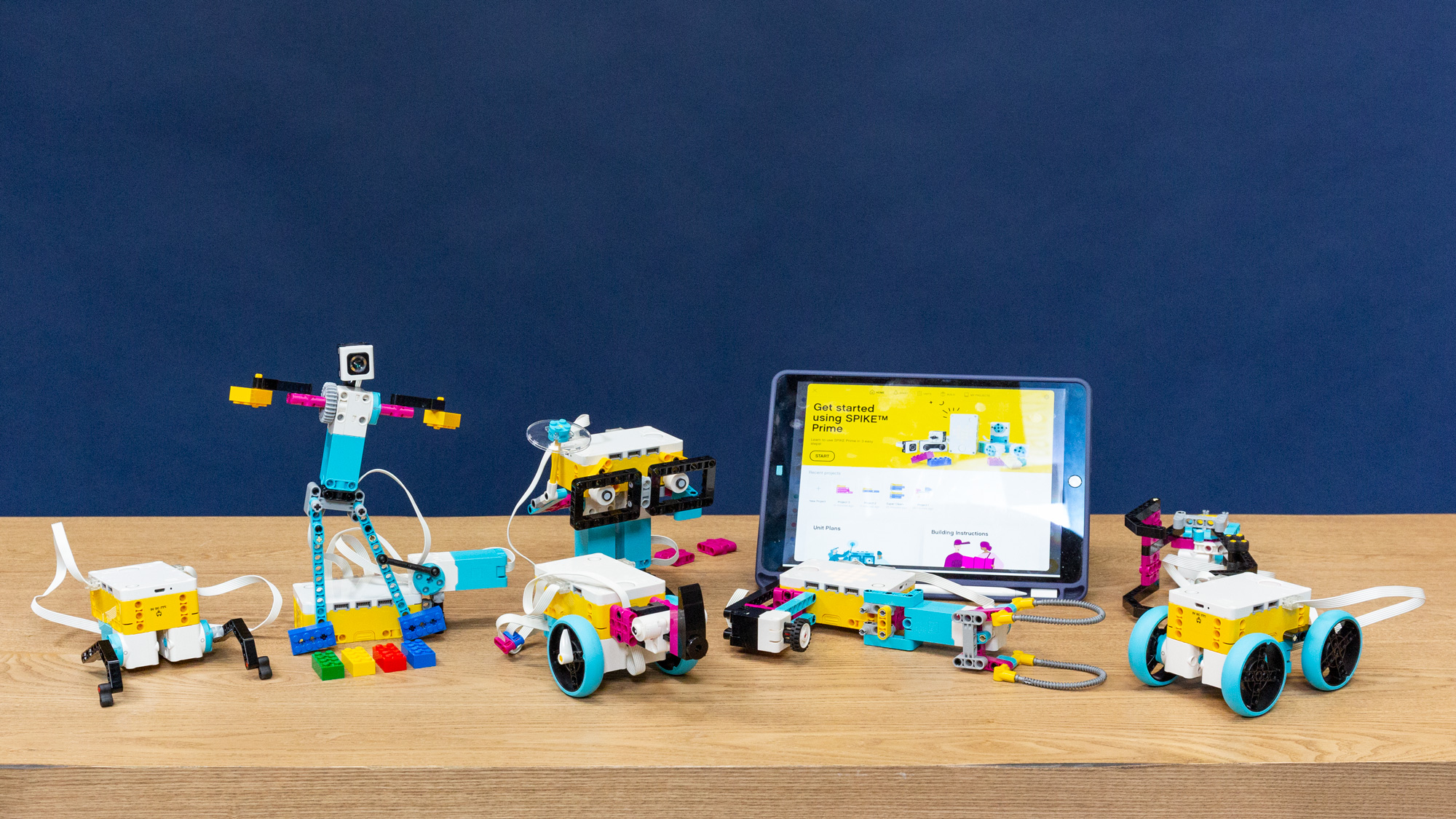
Lego Education celebrates 40 years of inspiring students to study the world with Spike Prime, a set aimed at middle school students designed to engage kids in engineering, math and science concepts. NOTE: The two robots on the far right are part of our own challenge.
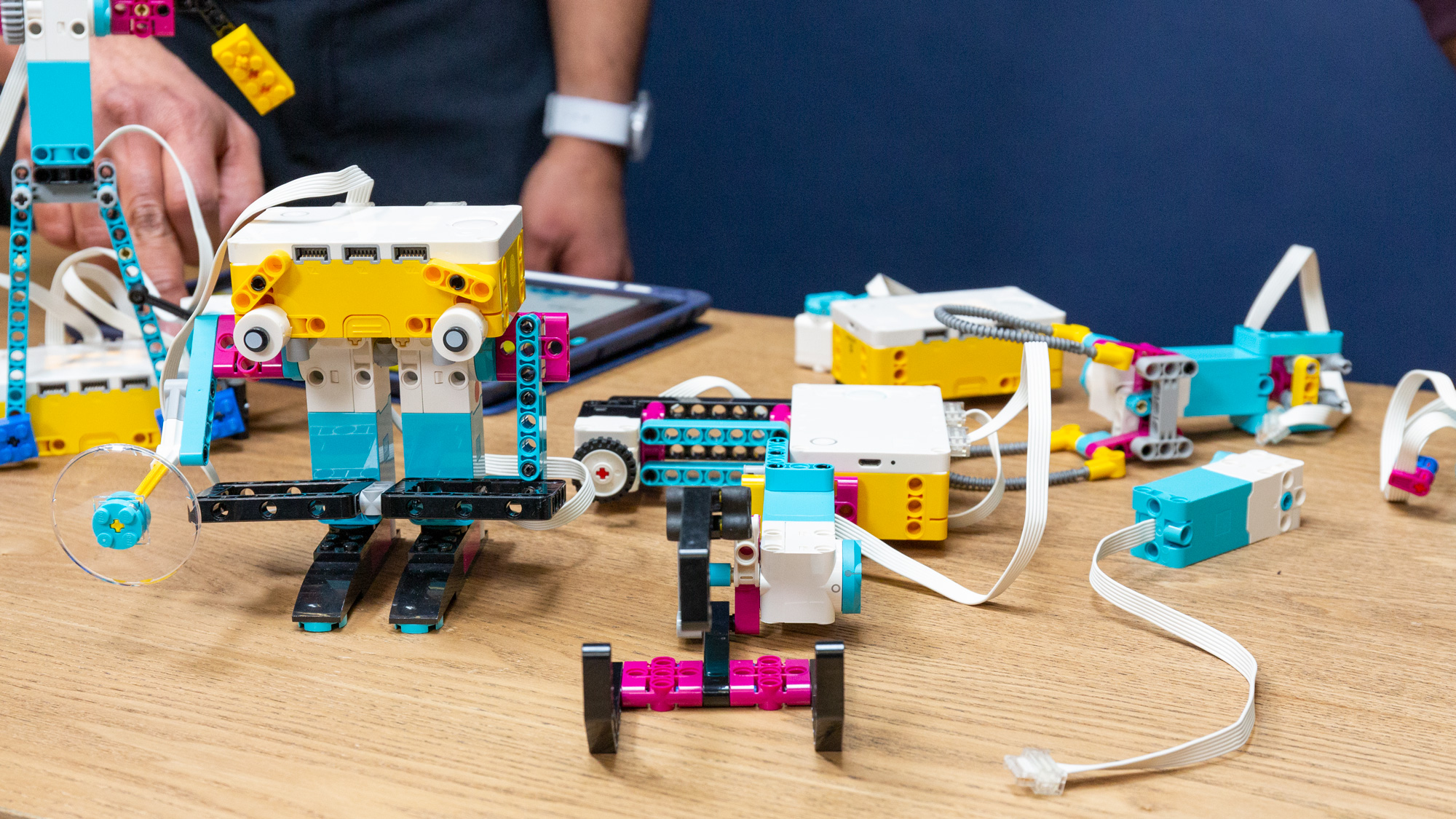
Spike Prime combines vibrant Lego Technic system elements, motors, sensors and the Scratch programming language to teach science and engineering concepts. Thirty two lesson plans in four teaching units are available in a free app.
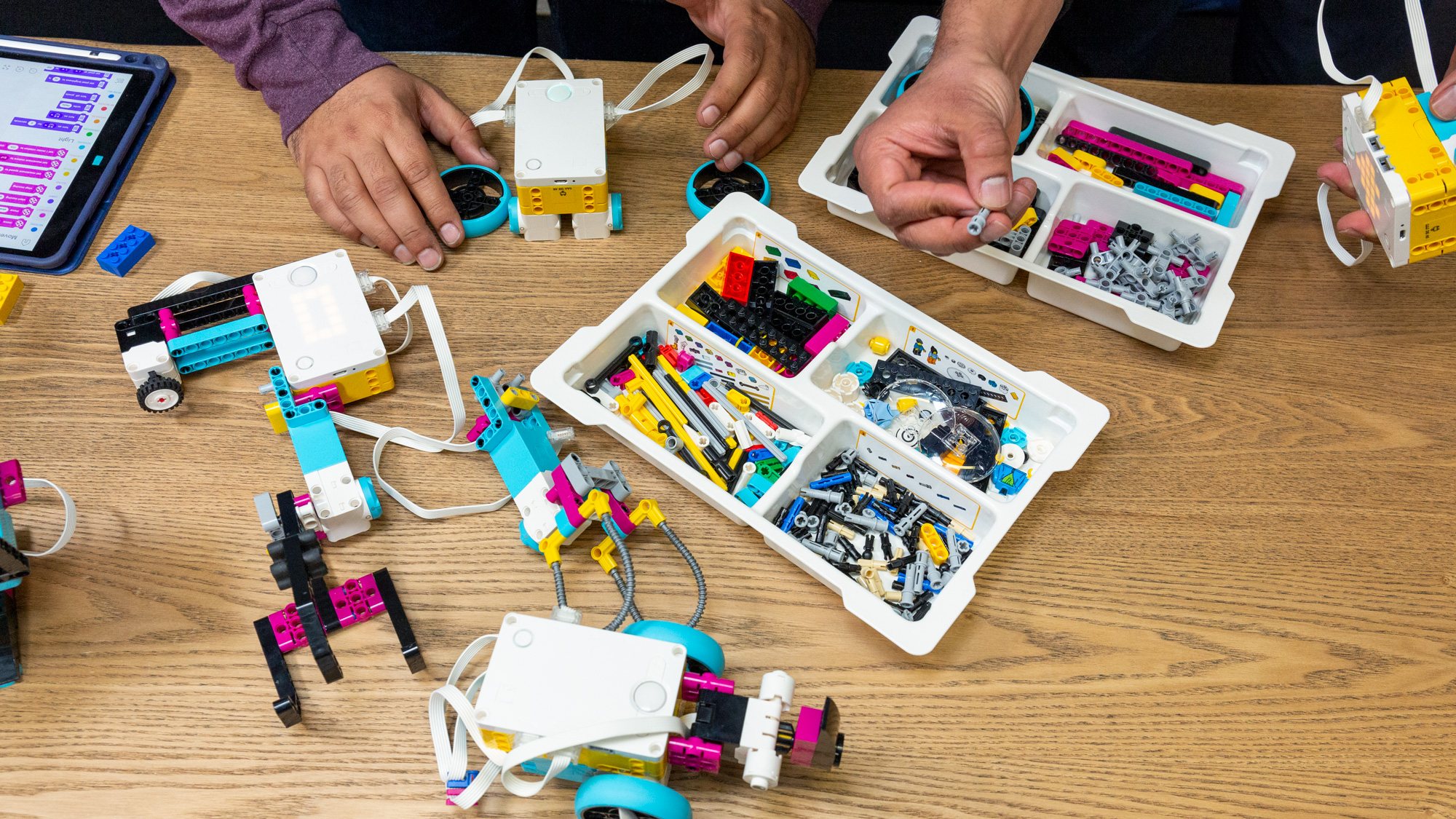
Each Spike Prime set is designed for use by up to three kids, so a classroom would need multiple sets for larger groups. The kit includes 528 pieces, including 11 new elements like bright purple "biscuit" pieces and a Technic base plate that allows building in any direction.
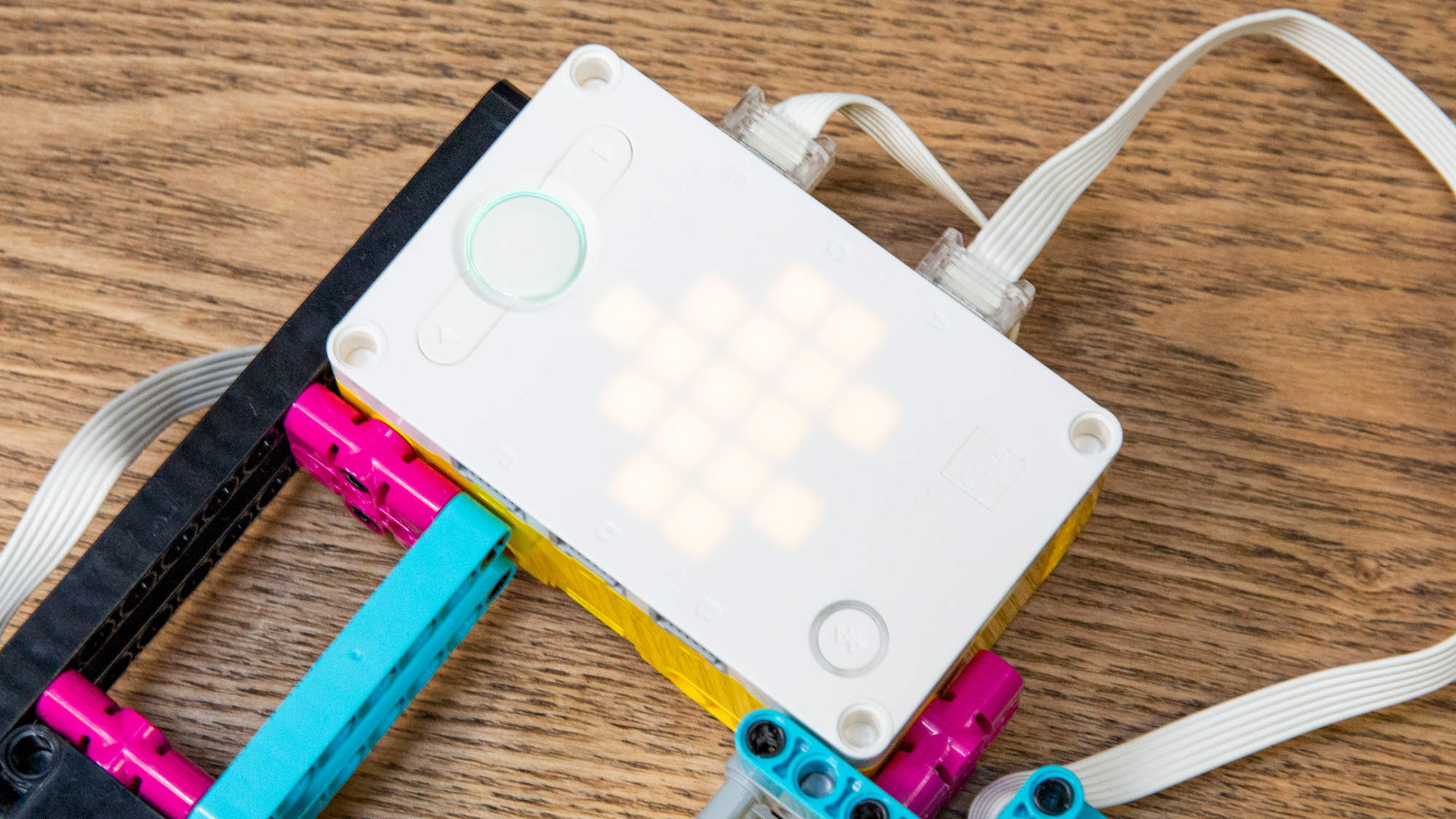
The multi-port Hub here is the brain of the Spike Prime set. The hub can be programmed to display different light-up shapes and control motors and sensors attached by cables.
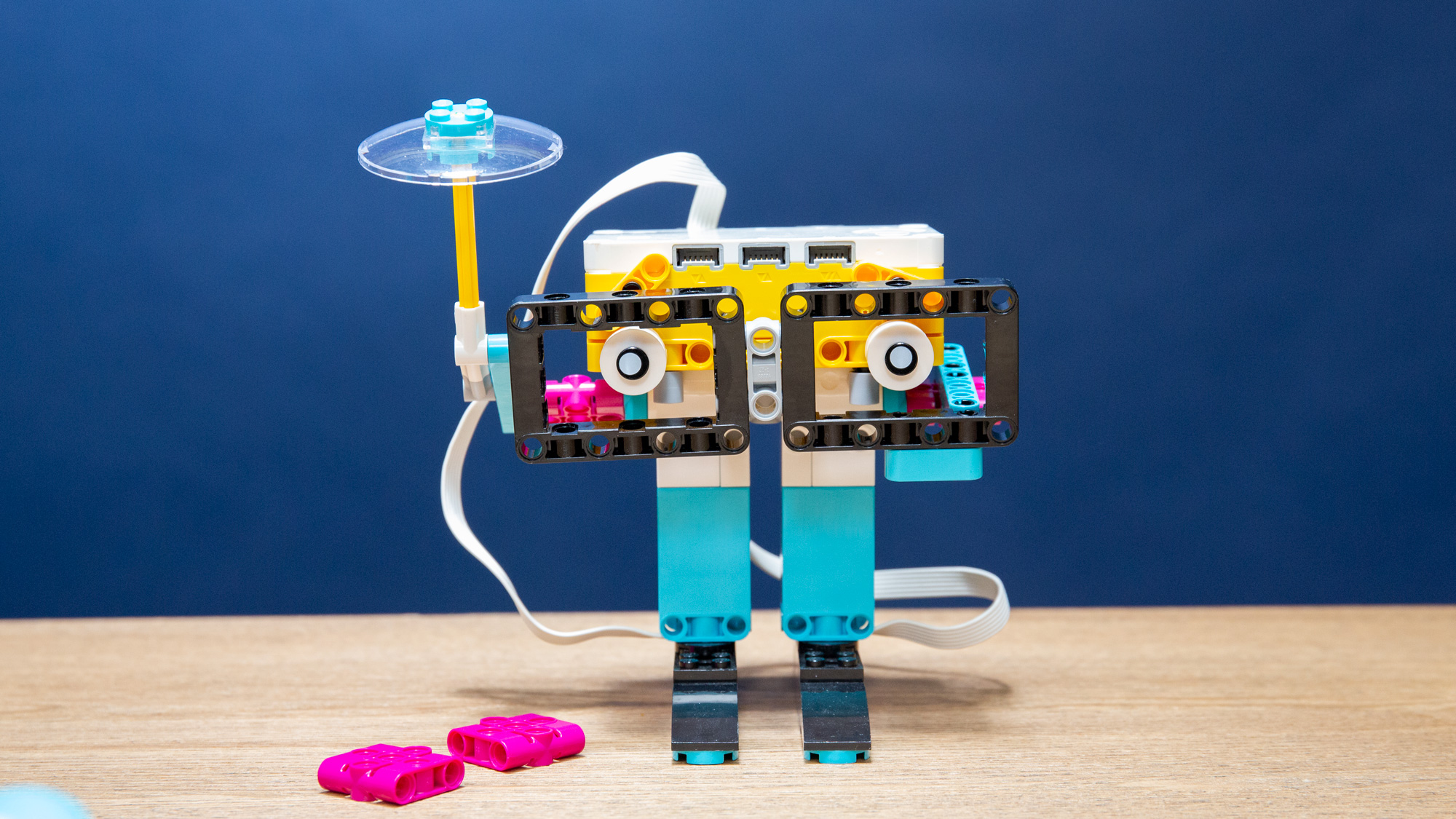
This "Weather Guy" is one of several builds for students to try. here, the hub is programmed to describe the weather in different cities. The umbrella hints at a chance of rain.
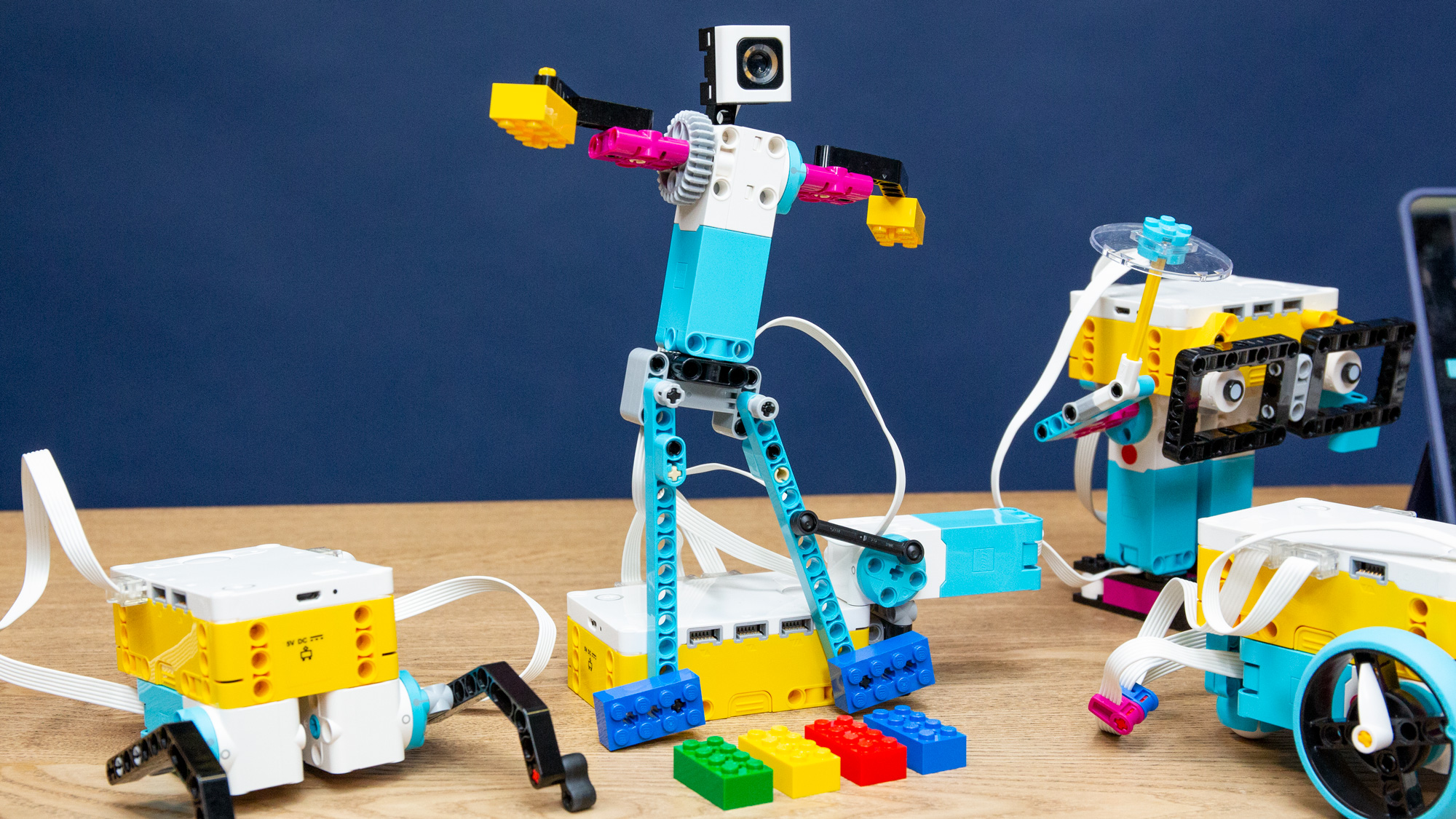
A breakdancing robot controlled by the colored bricks in front is one of the standout projects in Spike Prime. Students can program hip, leg and arm movements using Scratch in the Spike Prime app, and then control when movements start and stop with the bricks and color sensor head.
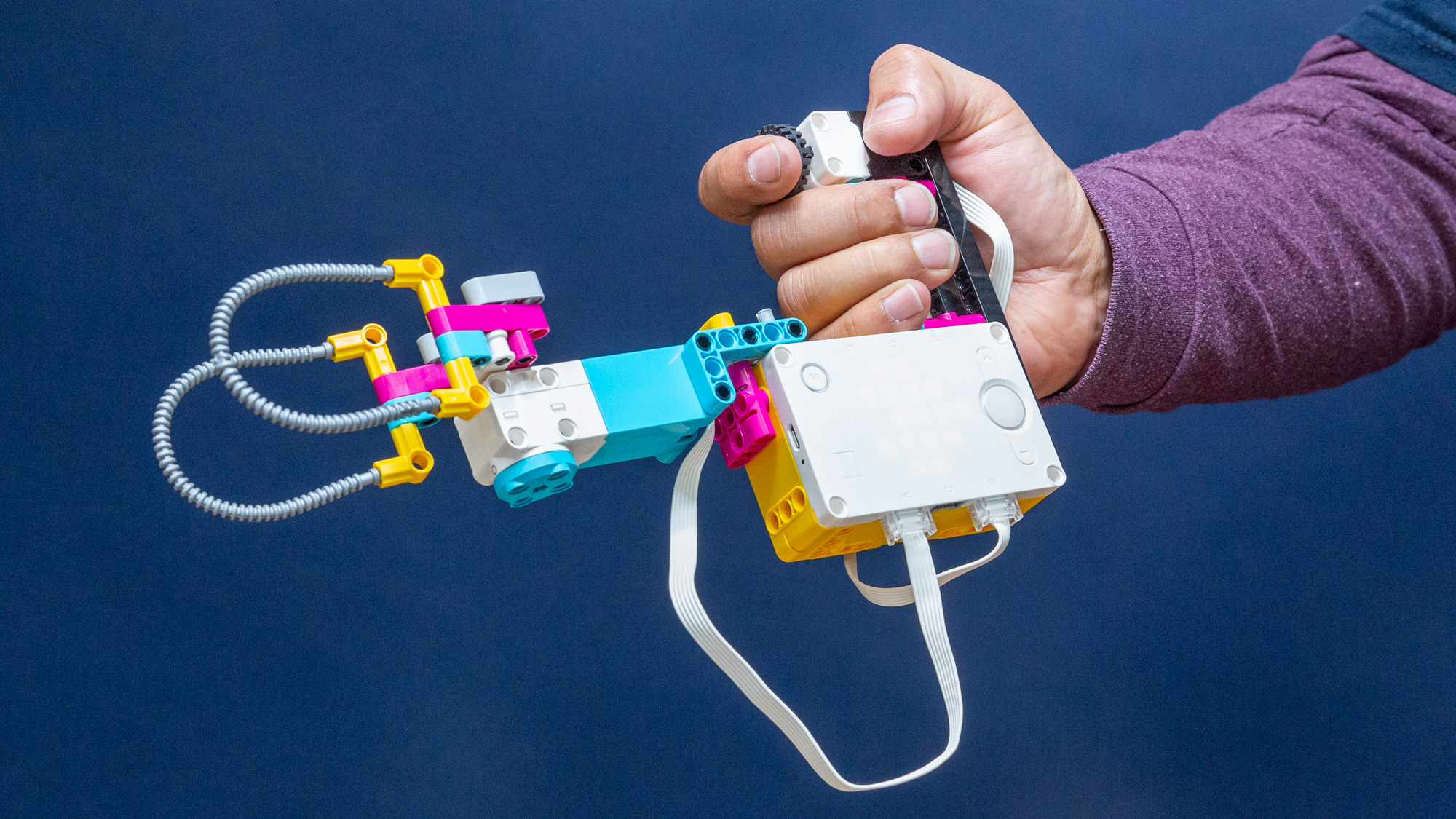
This grabber device is one of two invention builds designed to show students different solutions for litter cleanup around a school. Another design sports a robot-like claw.
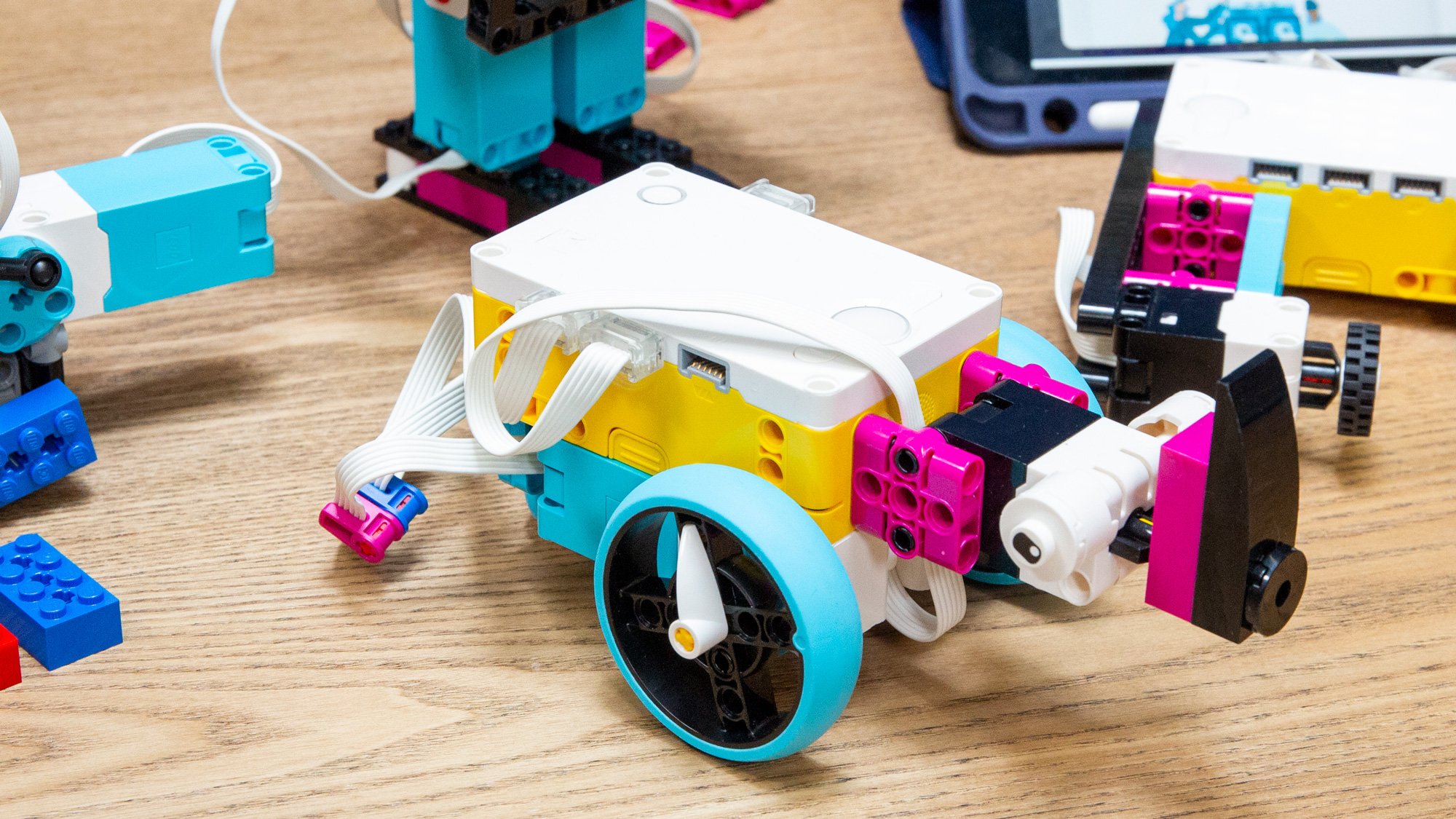
This rhino-looking model carries a force pressure sensor (front) sensitive to up to 10 Newtons (1 force-kg) for programming projects.
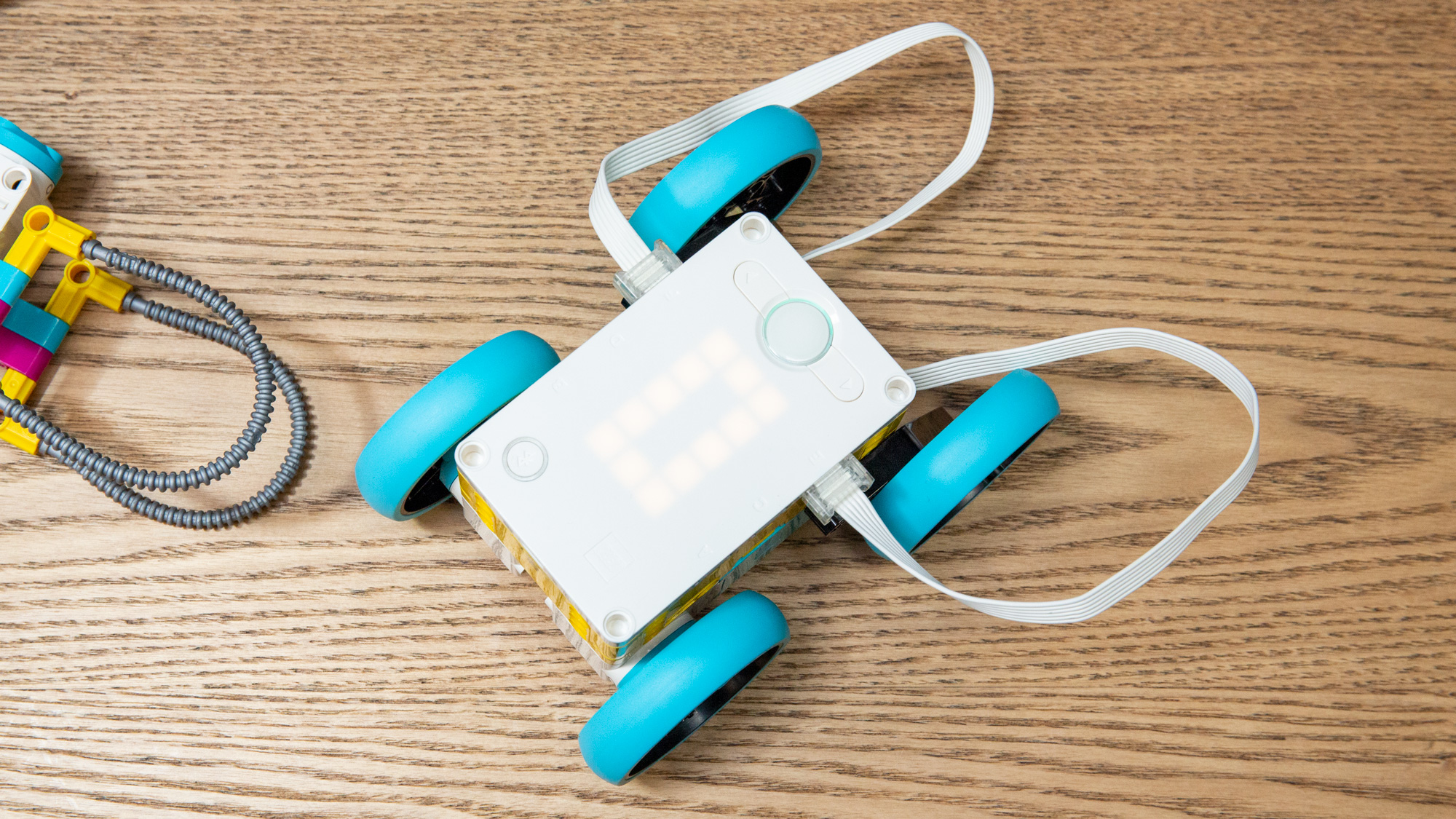
I put together this rover as part of a mobility challenge in Spike Prime, with some key help from Lego Education's Sid Muthyala. The goal: design a robot that can move forward for two seconds.
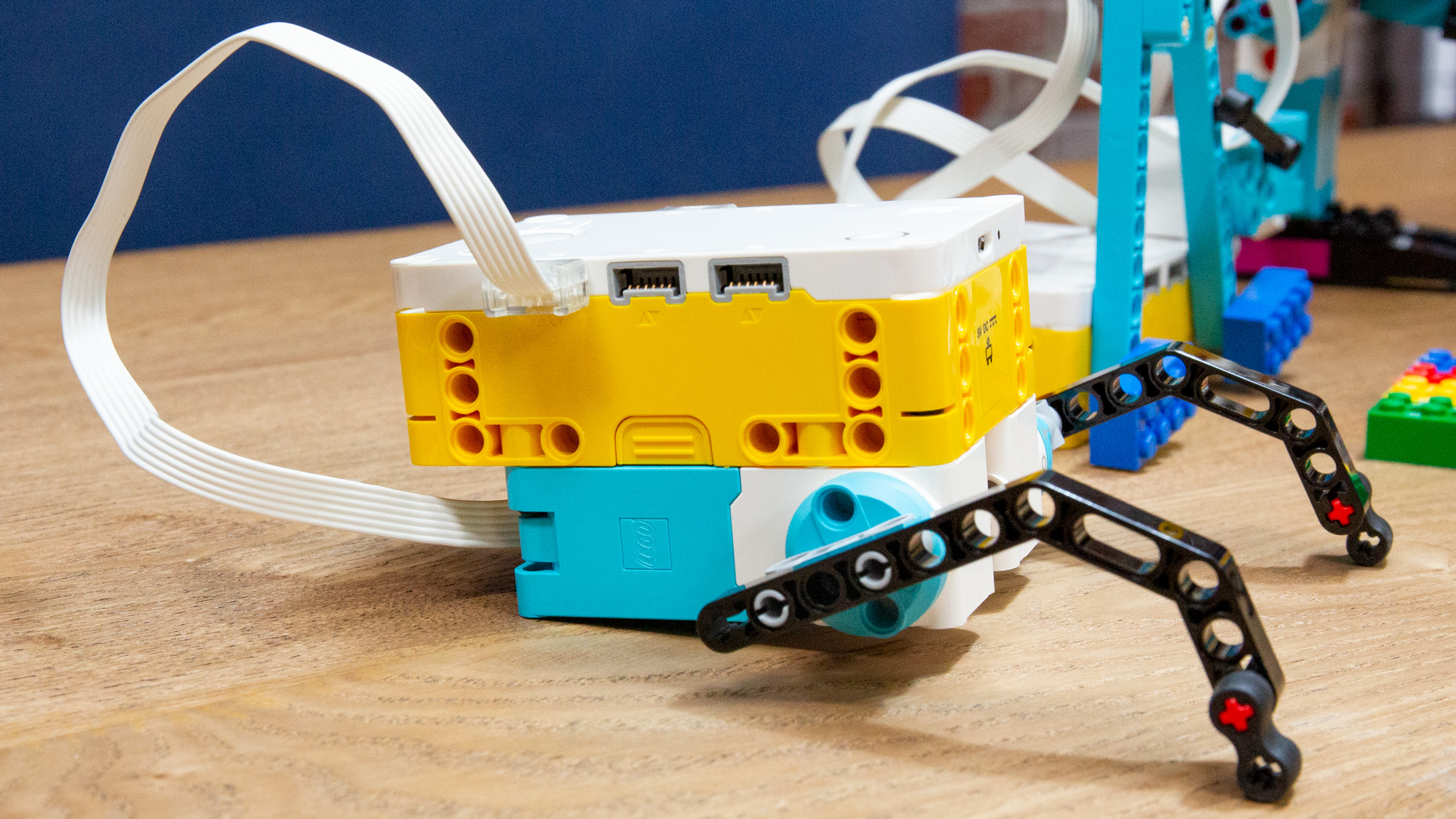
This arm-walking robot shows a different solution for the same robot mobility challenge.
Each Spike Prime kit sells for $329.95 and can be used by two or three kids in a class setting to solve engineering, programming and other challenges from one of 32 different lesson plans. Those lesson plans are organized in four teaching units with names like Kickstarter Business or Invention Squad, and are included in a free Spike Prime app. Programming commands are set using the Scratch coding language.
"The themes we're choosing, we're trying to be relevant to kids today," Muthyala said. "So it's not just 'Hey, learn about motions and forces,' but let's try and use inventions, and then try and teach them motions and mechanics."
Get the Space.com Newsletter
Breaking space news, the latest updates on rocket launches, skywatching events and more!
The set comes with 528 pieces in range of shapes and vibrant colors, three motors, three sensors, a series of data cables and a yellow multi-port Hub that serves as the brain of the set. The Hub can carry multiple programs and be commanded to light up and play sounds.
Spike Prime also includes 11 completely new Lego elements, including a Technic base plate that allows building in all directions, new wheel designs and an odd, purple 3x3 Technic brick called a "biscuit" to allow more connections for challenges.
Those challenges can range from building a "Weather Guy" robot, complete with sunglasses and an umbrella, and linking it with weather data from different cities, to programming a robot to dance on command using colored bricks. There are also sensors that can track color, distance and pressure to allow kids to design robots with different functions.
Related: Lego's Epic Apollo 11 Lunar Lander Set in Photos!
Some building challenges include a handheld grabber tool, a grasshopper-like insect, a rhino-like pressure sensor bot and — my personal favorite — a breakdancing robot that can move its hips, legs and arms separately depending on how students program it. But each of the lesson plans is designed to take about 45 minutes, including time for cleaning up.
I took one Spike Prime challenge to design a robot capable of moving itself forward for two seconds. Muthyala programmed that action in the Spike Prime app using scratch, and it was up to me to add pieces to a hub equipped with two motors to make the robot.
Once my robot was moving, Muthyala shared a student-design creation that used arms instead of wheels to pull itself along.
"So the idea is, we both used the exact same thing, a hub and two motors, but now we have two different ways of moving your creatures," he said. "Now imagine that in a classroom with 20 sets and 20 students. We've done this several time and there's 20 different ways of moving, just by trial and error."
Spike Prime fills a middle-school niche for Lego STEAM robotics, falling between the Lego Education's WeDo 2.0 system for elementary school students and the more advanced Mindstorms system for secondary and high school students. Lego Education has also released an expansion set with more pieces for Spike Prime and has a Competition Ready teaching unit for use with the FIRST Lego League and World Robot Olympiad competitions.
"As an educator who is always trying to find new ways to teach STEAM topics, I'm excited about Lego Education Spike Prime because it fits in with the maker mindset and creative elements that help get students at all levels involved and hands-on in the classroom," Jon Bishop, a K-12 STEM coordinator for Canton Public School District in Connecticut and a Lego Master Educator, said in a statement.
And that's the point, Muthyala said.
Lego Education stands apart from Lego's entertainment toy division precisely because it aims to engage kids in the world around them. That was true in 1980, when Lego Education was founded, and the mission has evolved over the last four decades.
The first STEAM and robotics elements arose 20 years ago with Mindstorms, Muthyala said. The challenge today is to prepare kids for the technologies and concepts they'll need once they leave school.
"I think for us, we've always been an education company," he said. "For 40 years now, we've been doing hands-on learning."
- The Best Lego Deals for Space Fans
- Stellar Deals on Telescopes and Binoculars
- The Best Gifts and Deals for Space Fans
Email Tariq Malik at tmalik@space.com or follow him @tariqjmalik. Follow us @Spacedotcom and Facebook.

Join our Space Forums to keep talking space on the latest missions, night sky and more! And if you have a news tip, correction or comment, let us know at: community@space.com.

Tariq is the Editor-in-Chief of Space.com and joined the team in 2001, first as an intern and staff writer, and later as an editor. He covers human spaceflight, exploration and space science, as well as skywatching and entertainment. He became Space.com's Managing Editor in 2009 and Editor-in-Chief in 2019. Before joining Space.com, Tariq was a staff reporter for The Los Angeles Times covering education and city beats in La Habra, Fullerton and Huntington Beach. In October 2022, Tariq received the Harry Kolcum Award for excellence in space reporting from the National Space Club Florida Committee. He is also an Eagle Scout (yes, he has the Space Exploration merit badge) and went to Space Camp four times as a kid and a fifth time as an adult. He has journalism degrees from the University of Southern California and New York University. You can find Tariq at Space.com and as the co-host to the This Week In Space podcast with space historian Rod Pyle on the TWiT network. To see his latest project, you can follow Tariq on Twitter @tariqjmalik.
It's always a pleasure to meet a new Lego Star Wars set, as Jango Fett’s Firespray-Class Starship drops in for Star Wars Day
'I Have No Mouth, and I Must Scream' celebrates 30 years with a console port, ready to traumatise a whole new generation with its tales of a mad AI god










